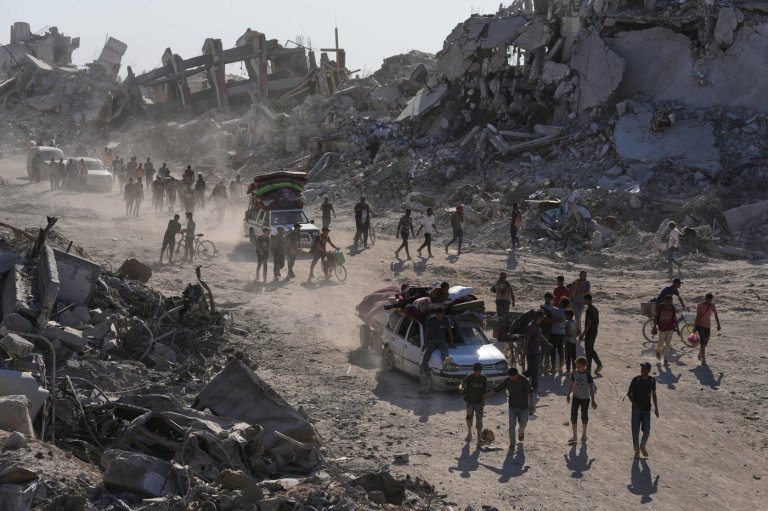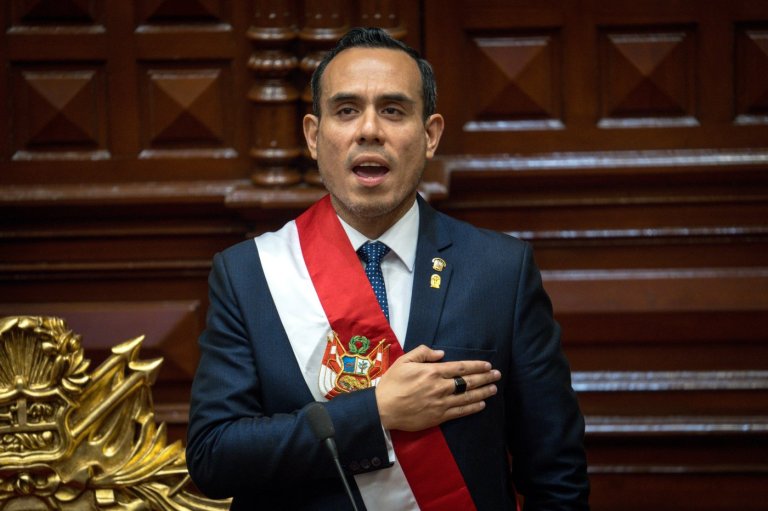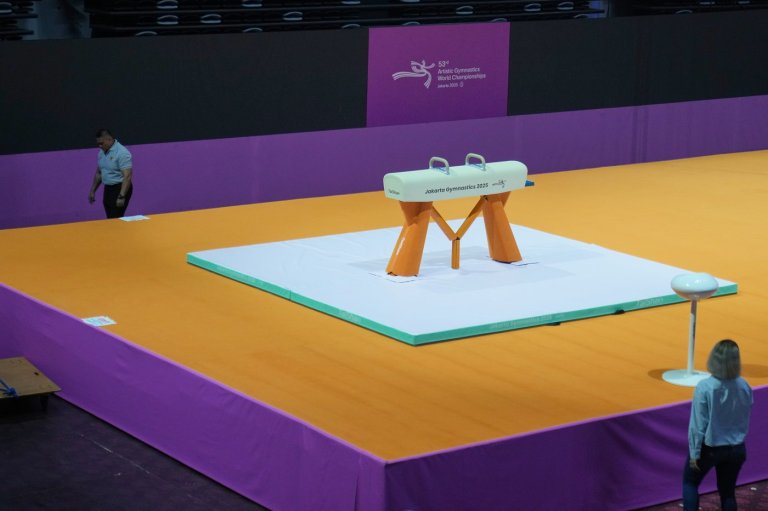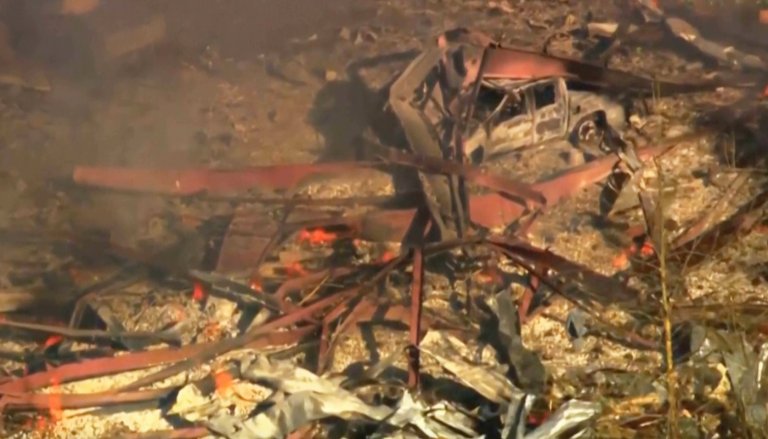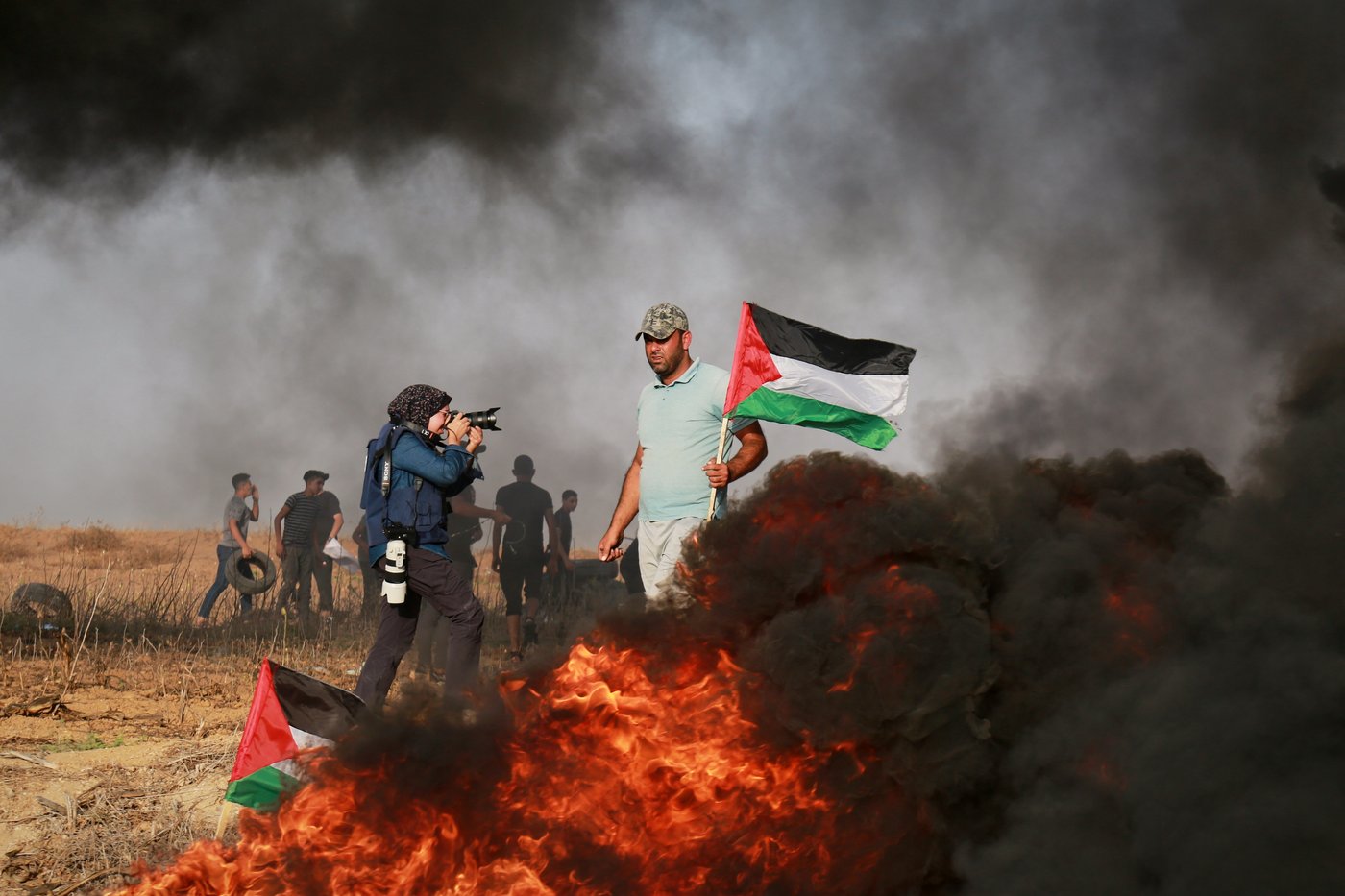
An AP photographer shares the stories behind some of her most poignant Gaza images
CAIRO (AP) — After two years of war in Gaza, and as a ceasefire raised hopes for the end of the conflict, Associated Press photographer Fatima Shbair looked back at some of her most poignant images. Shbair has seen conflict and violence in the territory since she was a young girl, and when Hamas’ Oct. 7, 2023, attack triggered Israel’s campaign of retaliation, she spent several days reporting from her hometown of Gaza City.
As Israeli forces advanced, she moved with her family to Rafah, in southern Gaza. For months, she covered the war from Rafah and Khan Younis, often based at hospitals.
In April 2024, Shbair and her family were able to leave Gaza, where Israel’s offensive aimed at destroying Hamas has killed tens of thousands of Palestinians and driven most of the population from their homes. Since then, Shbair has been based in Dubai for the AP.
These are her photos and the stories behind them.
Oct 8: The first strikes
On Oct. 7, I was supposed to receive the keys for my new home, an apartment I was building on the top floor of my family home. That morning, as I slept, I heard something I thought was rain or voices. It was rockets, launching from every side of Gaza — Hamas had launched its attack on Israel, in which militants killed some 1,200 people and took 251 others hostage.
That night, we waited on the roof of AP’s office building for Israel’s response. It’s a tall building with several news outlets and a view across Gaza City.
Finally, around 3 or 4 a.m., it came. Continuous airstrikes, explosions hitting many places simultaneously. It went all night. We ran to every side of the building, taking pictures. It was the start of Israel’s campaign to recover hostages and eliminate Hamas, whose members and fighters live and operate among Gaza’s population.
Many of my journalist colleagues were on that roof as well. Most have since been killed.
Oct. 19: Trapped under rubble
This strike happened overnight, and rescue workers couldn’t go out until morning. People were trapped under rubble for hours. I crawled over wreckage for this shot.
It was less than two weeks into the war, and every day we were running, running, running. Everything happened so fast.
I had moved my parents and siblings to the south. I operated out of the hospital in Khan Younis. From there, we could follow rescue workers rushing to Israeli airstrike scenes.
It became an oppressive, never-pausing routine. Every day, I woke up to blood. I had breakfast in the morgue, next to bodies. We were constantly moving to buildings leveled by airstrikes. At every one, rescue workers carried out bodies and wounded.
After each long day, I slept in my car for a few hours. But it wasn’t really sleep, with all the airstrikes overnight – and the screams of the bereaved. I was parked outside the morgue and could hear the families from inside.
I rarely saw or spoke to my own family. Later, I moved to base myself in the hospital in Rafah, farther south, the city where my family was. I always knew the direction of the house where they were sheltering. When I heard a strike, I looked to see whether the smoke was coming from that direction.
Even if it was, I wouldn’t call my family. If you call, you might hear screaming, you might learn they are injured or buried under rubble.
It was better to wait at the hospital to see if they came in with the casualties. Maybe they would be brought in wounded. Maybe they would be in the morgue. OK, I would face that.
But a call means bad news. I hate calls during war.
Oct. 21, 2023: The toll for the children
An airstrike hit a house in Khan Younis just outside a U.N. school full of people driven from their homes. It wasn’t until I got back to AP’s office tent and looked at this picture that I saw this girl – and the look on her face as emergency workers carried a dead child out of the rubble.
It was early in the war, and the girl still reacted with shock. I thought of myself. As a child, when someone in my family passed away, I was afraid to even be in the same room with them to say goodbye. So what must this girl be thinking? She looked so afraid.
But as time went on, it became normal. At the scene of every strike, there were lots of children. They got there before us. They would tell us, “There’s still someone trapped inside. A person is crushed between two floors.” One kid told me he saw a leg sticking out of the rubble. Children, describing things difficult for the brain to even conceive.
Later, on one of my last days in Gaza, I was in a hospital morgue. It was a chaotic day, with bodies strewn on the floor, the smell of blood everywhere. A child, maybe 5, collected pieces of one body, putting them in a bag for the family to bury. The adults around him were unfazed, like this was normal.
What will a child who picks up body parts off the ground remember?
Oct 21, 2023: Connecting a family
After the same strike, I climbed onto a wrecked car and got this shot.
A week later, I got a message on Instagram: “Please reply, it’s urgent.”
It was Dina Ali al-Nazzal, from Denmark, the mother of the boy on the stretcher. More than a decade ago, she said, her husband left her and took the children – Mohammed, then 3, and Layal, 2 – to Gaza. She hadn’t seen them since. She was terrified when she heard their home was struck.
Then she saw my photo of Mohammed, now 14, online.
“Your lens saved a mother’s heart from stopping,” al-Nazzal wrote. She was able to contact the hospital and learn that Layal survived, too.
I became a photographer because of my grandmother. She took pictures when she was young; she had all these old cameras in our house. I was curious about these machines, like antiques.
After university, I spent a year studying photography. I had so many books and magazines, a million photos on my computer. I started taking pictures of daily life in the streets, on the beach.
I saw a beautiful life in Gaza, something people outside should see. I found I had a story to tell; I could express myself. I did it because I loved photography.
But when this mother contacted me, I realized that our work is important. It can impact the life of someone even far away. We have to be here, on the ground, seeing. You make a difference, even if it’s tiny.
Dec. 14, 2023: A different kind of death
Every day we saw bodies – in the morgue. This was different.
An airstrike had hit in the market – where doctors do triage, rushing through the flood of wounded to decide who is the priority.
You can see this girl is no longer with us. There is nothing in her eyes. But she was breathing. I was frozen, thinking of my younger sister, the same age.
This girl has to live, I thought. I saw the doctors’ hands on her, clearing blood from her mouth. They held her like she was already a corpse, manipulating her head, touching her eyes. Her name, Maya, was written on her belly with marker. Why don’t you do something, I told them.
The doctor looked at me and shook his head.
He came over and told me this was the hardest thing, every day. He urged me to go inside to take more photos. I couldn’t focus. I just wanted to get away.
Finally, Maya stopped breathing.
I ran back to our office tent. And I threw up.
This girl was supposed to have a future. As I filed this frame, I looked at photos of her on her family’s social media, a little girl laughing, happy. At that moment, I knew she was dead, and they did not. She had been taken by medics from the scene of the strike, and it would take time for her family to find her.
I never cry. It’s like my tears are frozen inside my eyes. I always feel I must stay strong — to the point that I lost the ability to cry.
Jan 30, 2024: The mass grave
In all Gaza’s past conflicts, we never had mass graves.
These were bodies Israel collected from all over Gaza, particularly the north. They search through them, for bodies of hostages or of Palestinians they identify as militants. Then they send them piled in trucks back to Gaza, dozens or even 100 at a time, with no documents for identification.
You can’t imagine the smell – or so other photographers told me. As a child, I fell and hit my nose. Ever since, I haven’t had a good sense of smell. That helped me. I could get close, nearly into the grave itself.
As I took pictures, I felt like it was for nothing. In the background, you see relatives hoping to find loved ones, maybe see clothes they recognize. But how can they?
Every body was the same, anonymous. But each one had a life. And they never imagined this would be their end – buried nameless, far from home, in a line of strangers.
Feb. 24, 2024: Chaos at the hospital
My father was dying. I was at his bedside in Al-Najjar Hospital in Rafah. He’d been ill for a long time, and the hospitals didn’t have supplies to treat him. Doctors said he didn’t have much time left. He was unconscious, but I wanted to spend every moment with him.
The hospital was quiet. In an instant, it became chaos. The wounded from airstrikes poured in. Doctors, nurses and medics pushed by, jostling my father’s bed. Al-Najjar has a small emergency ward, with few beds, so wounded lay on the floor. A man whose jaw had been blown off – he’d lost half his face — was still walking, trying to survive.
I started taking photos. The whole time, I kept looking back at my dad.
My dad is my hero. He encouraged me in photography. Being a woman journalist in Gaza is hard. But throughout my career, his words always were in my head: “You are my daughter.”
In this moment, I struggled. I wanted to be next to my father. It was painful to see Dad this way, far from our home in Gaza City, chaos all around. But I also felt he’d be proud. He’s with me in his last moments, and I’m doing the thing he loved. I’m his daughter, and I’m strong.
I photographed a wounded child screaming in the hall near Dad’s bed. I was the only photographer there, and I felt a responsibility: If I don’t take this picture, this moment will die with no one knowing.
The boy’s family came. I didn’t know this child, but his family knew him and loved him. They don’t know me, but I have my father whom I love nearby. Each of us is living a nightmare.
The next morning, my brother called from the hospital. My father had died.
March 4, 2024: The mourners
I didn’t cry that day. I had to stay strong for my mother and family. I took some days off.
This was my first day back working. I covered the morgue, showing people coming to say goodbye to loved ones.
I walked slowly. I was afraid to be there, to take just one step inside. But I forced myself.
This man in the photo, he’s lying on the same spot that my dad was. As they wept over him, I felt it all. I saw everything, I saw that day again. My vision was blurring. I was in a different world, spinning, spinning, spinning. I was going to collapse on the bodies.
But Mariam Dagga did not let me collapse. Mariam was there right next to me, taking pictures as well. We often worked together — it’s more comfortable having another woman photographer with you.
She gripped my hand. “Don’t worry. I feel you. I felt it before.”
Her brother had been killed by Israeli fire in 2018. She wanted me to feel my pain so I could be strong again, so I could keep taking photos.
That day, I found the ability to cry. I shed tears for my father.
Seventeen months after this photo was made, Mariam, a visual journalist working with the AP, was killed by an Israeli strike on a hospital.
Mariam and I were always by each other’s side. All the work I’ve done since that day she gave me strength is because of Mariam. Maybe the war will last forever, but I will stay strong. Mariam told me to keep doing the job, to keep taking photos.
March 18, 2024: Ramadan
Home means everything during Ramadan, Islam’s holy month of fasting.
Nothing in this photo tells you it’s Ramadan. This entire neighborhood in Rafah was destroyed, every house in ruins. All the residents had moved to a U.N. school.
But this family left the shelter to have their Ramadan meal here, in what was their home. Almost nothing is left, just a wall. They made a soup and a salad of tomatoes and cucumbers. They were silent. We were all silent.
I was thinking of my family home, in Gaza City, which has been destroyed.
Now I am outside of Gaza. I wish I were still there. With the new ceasefire agreement, the war may end. But the faces, the voices, the days we loved are gone, and the struggle with grief and memory has only begun.
What we saw in Gaza made us different from people outside. We may be having a meal, talking, but we are not there. We are in a different world.
___
This account was related by Shbair to Associated Press reporter Lee Keath, who wrote from Cairo.
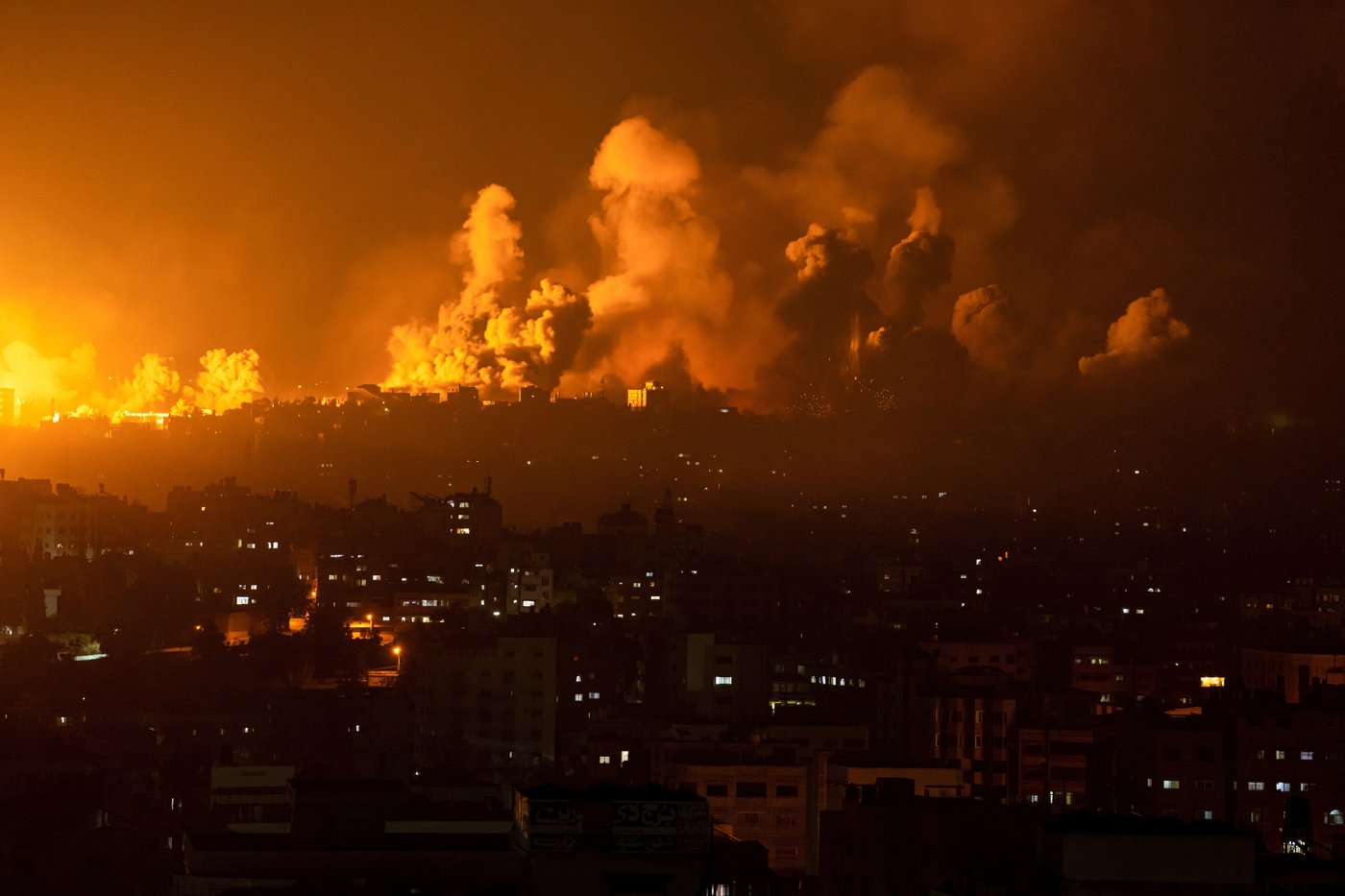
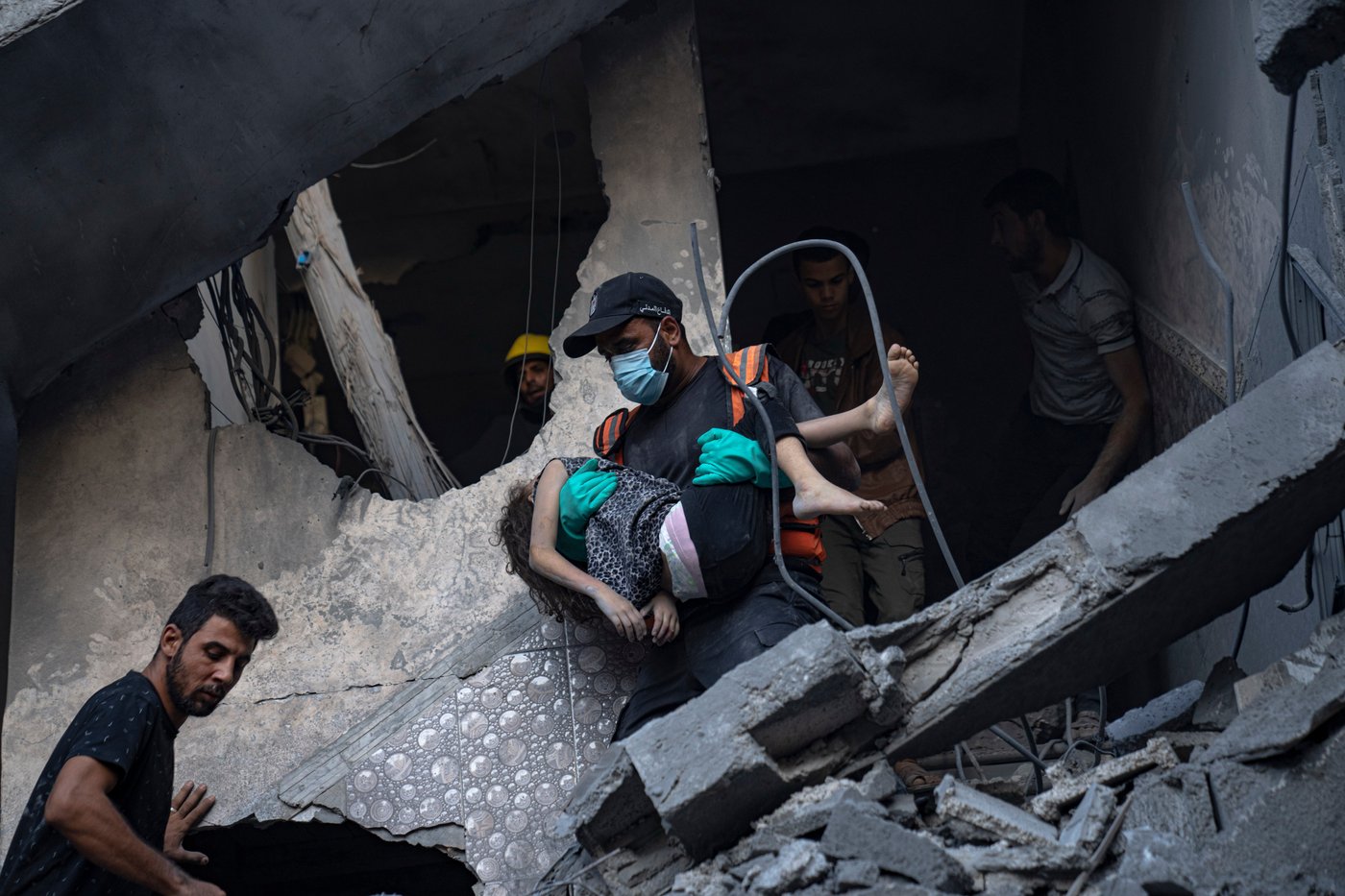
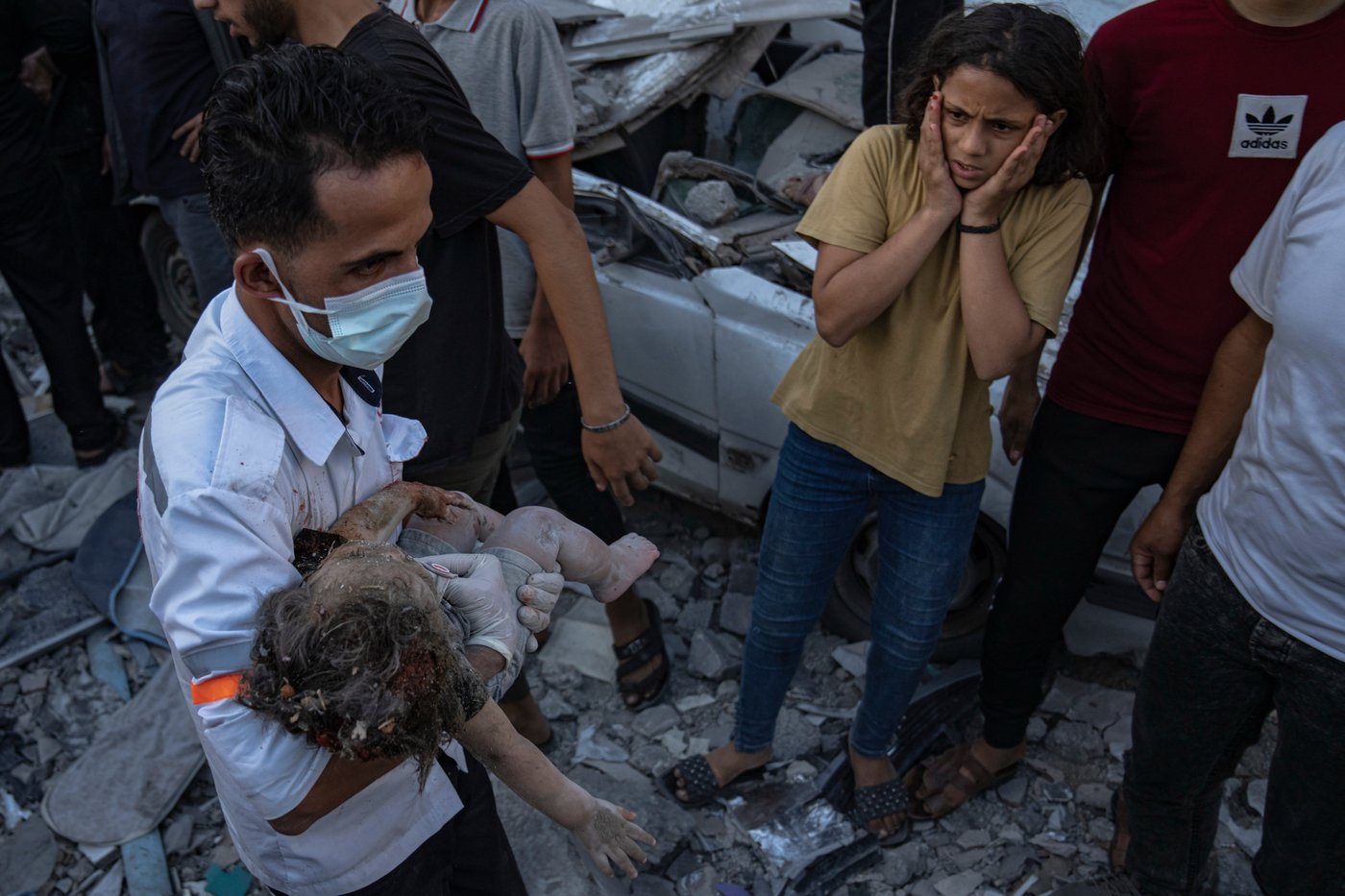
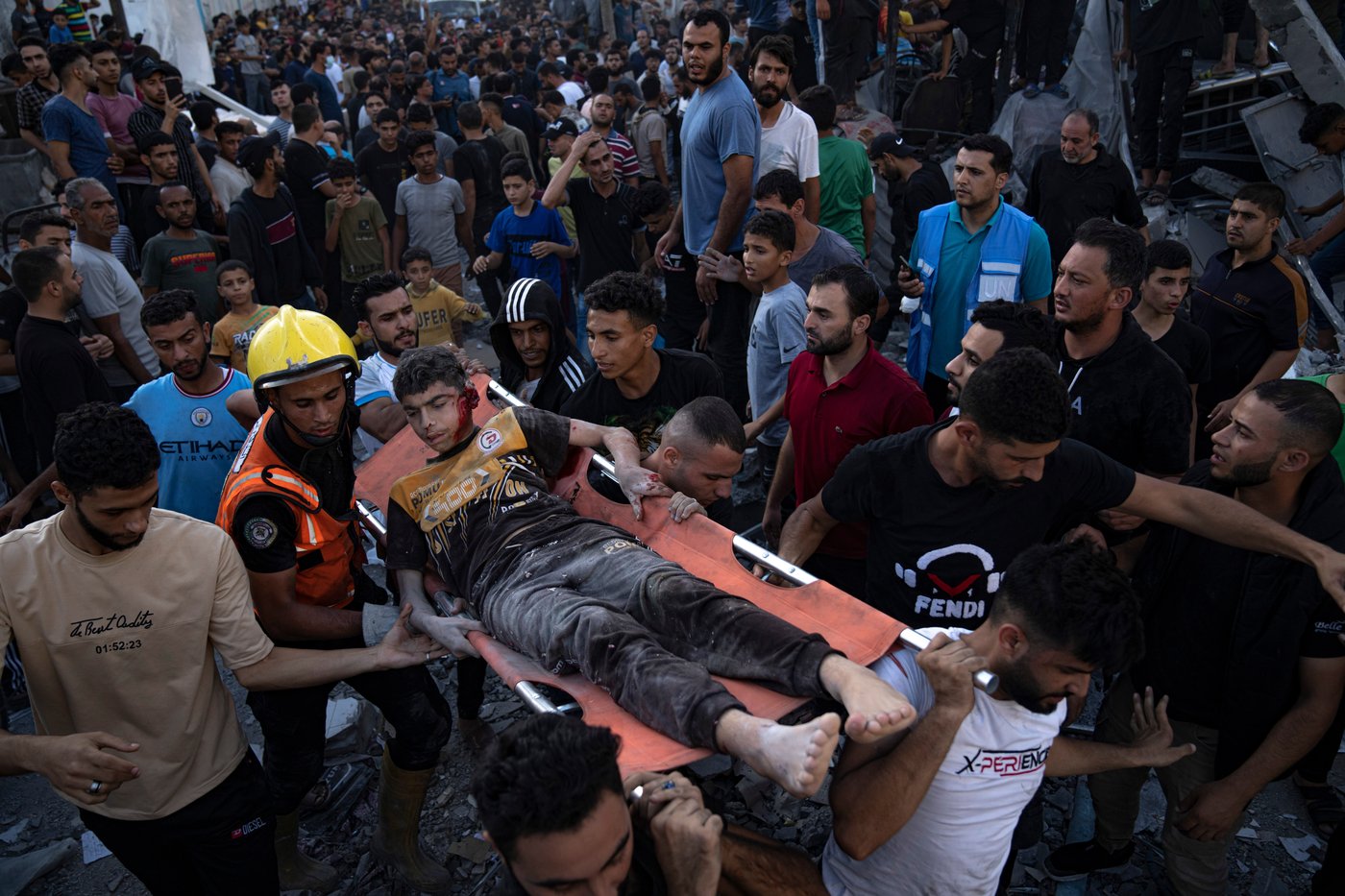
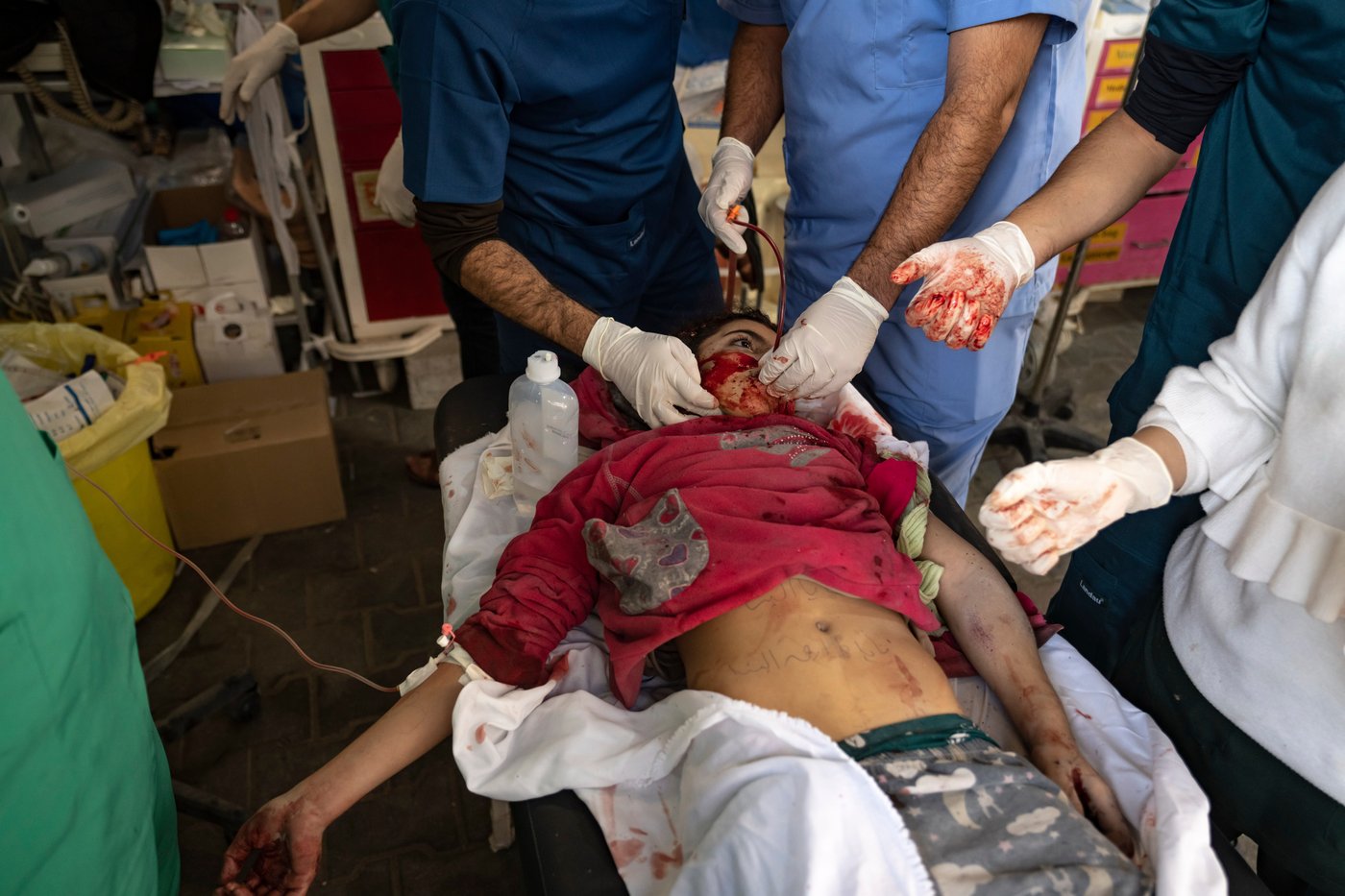
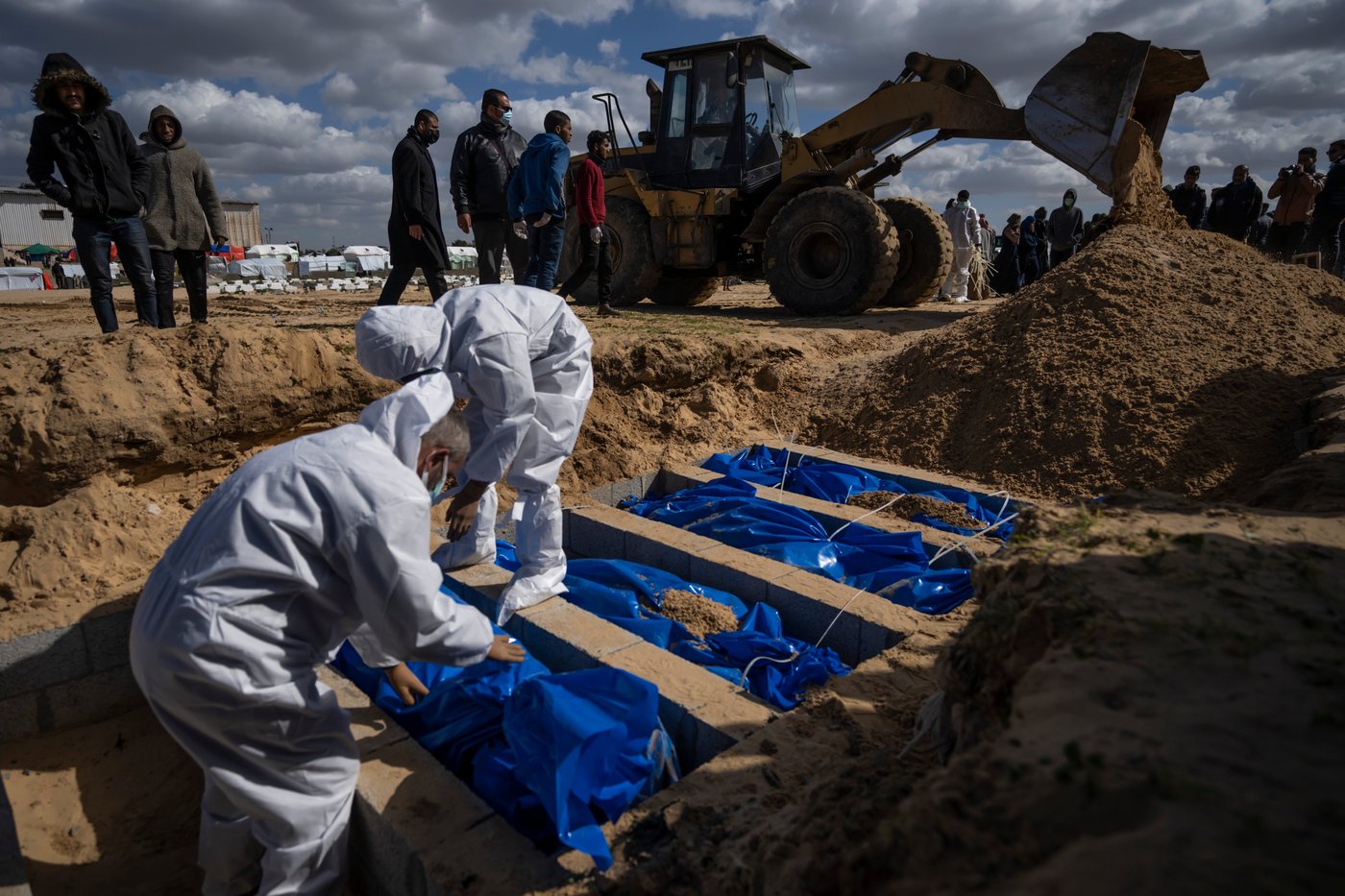
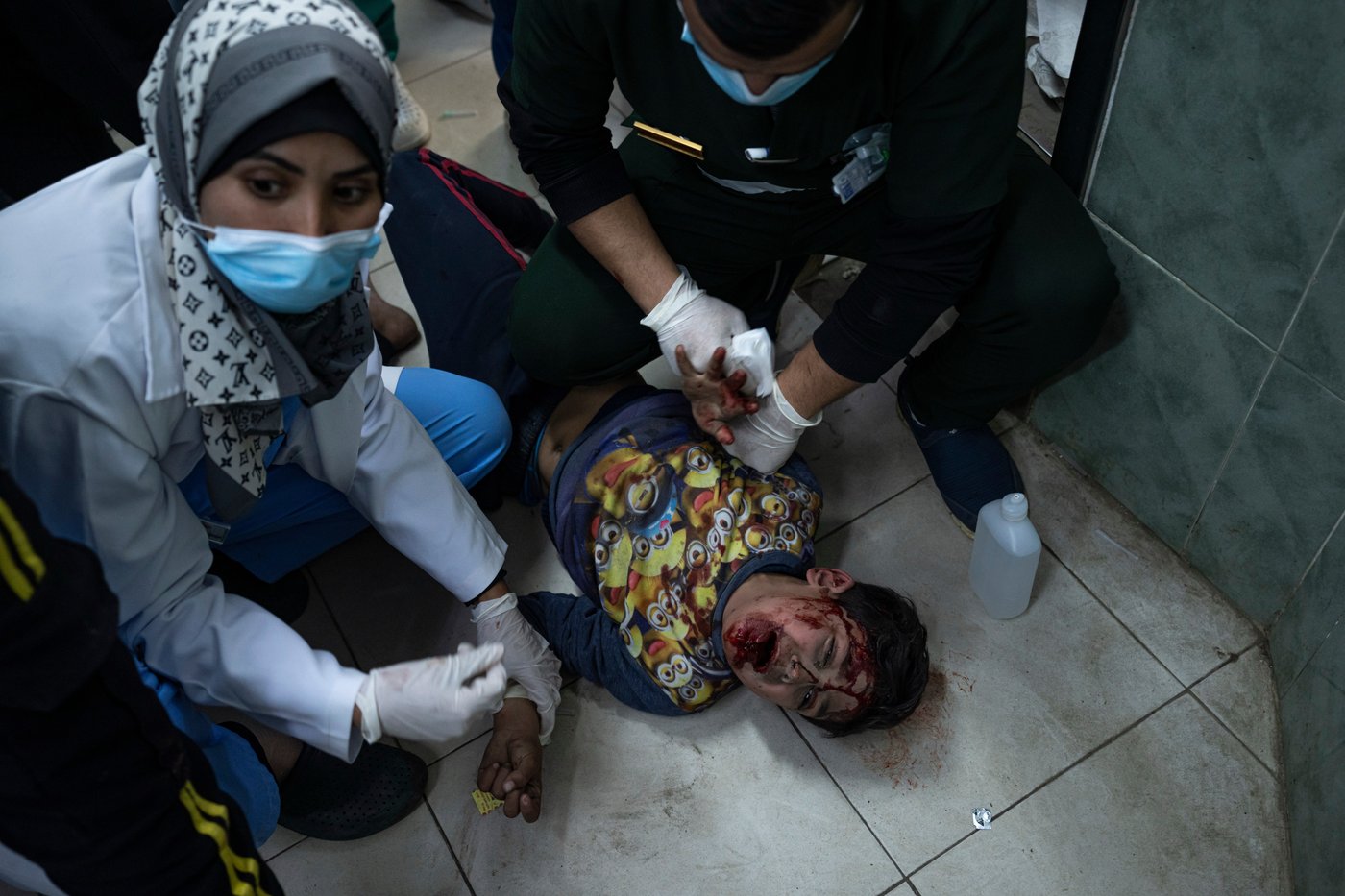
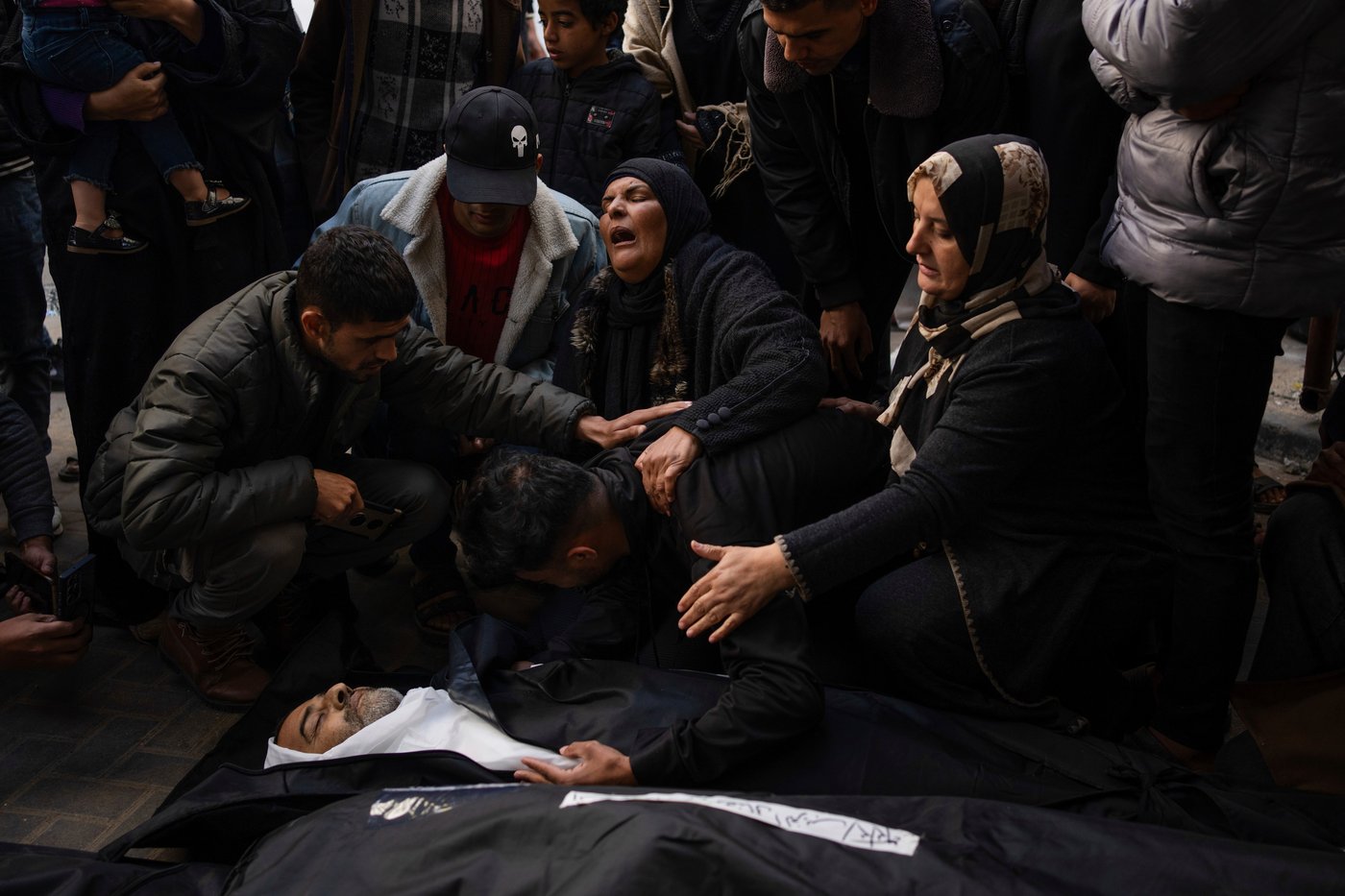
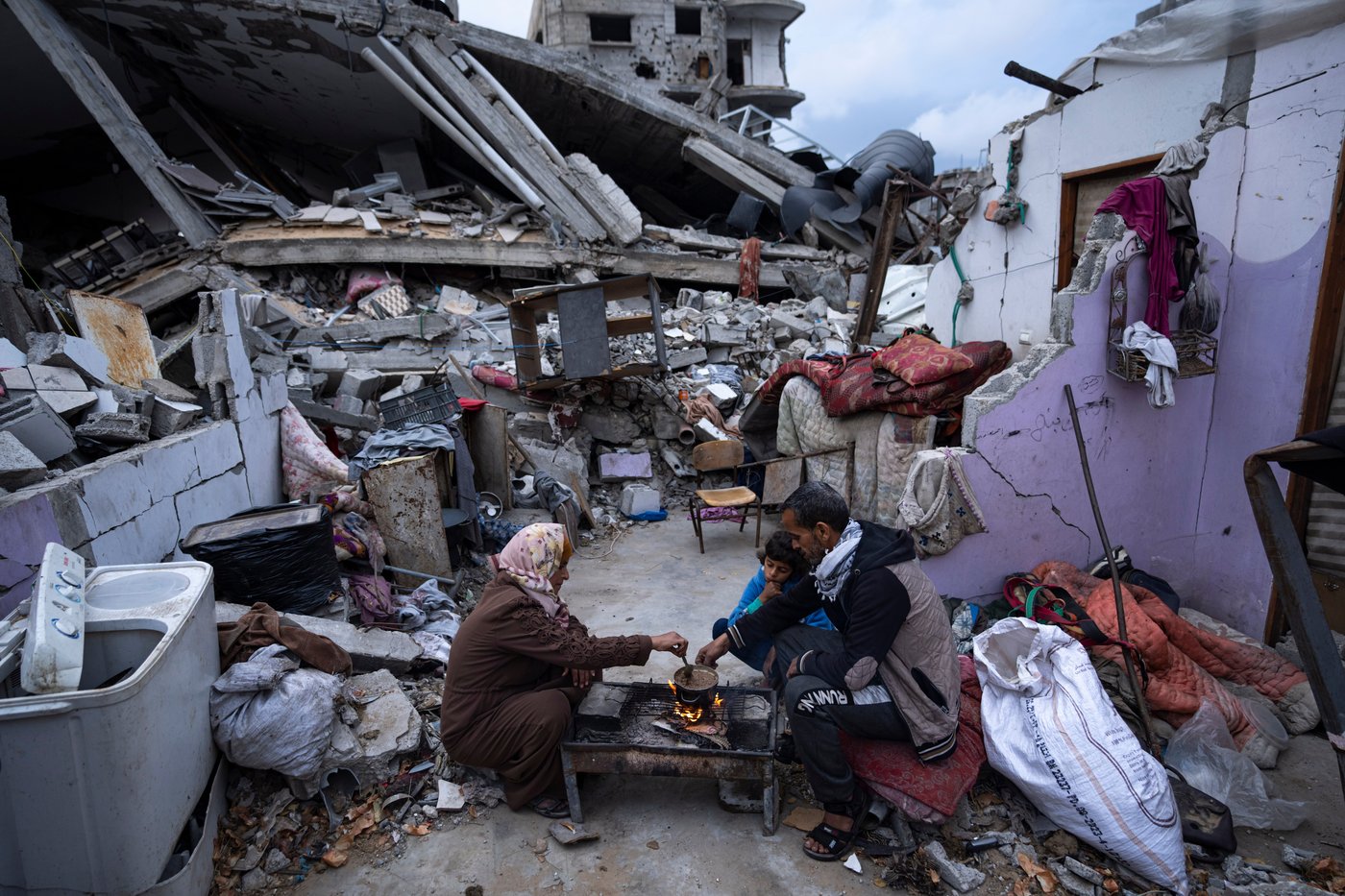
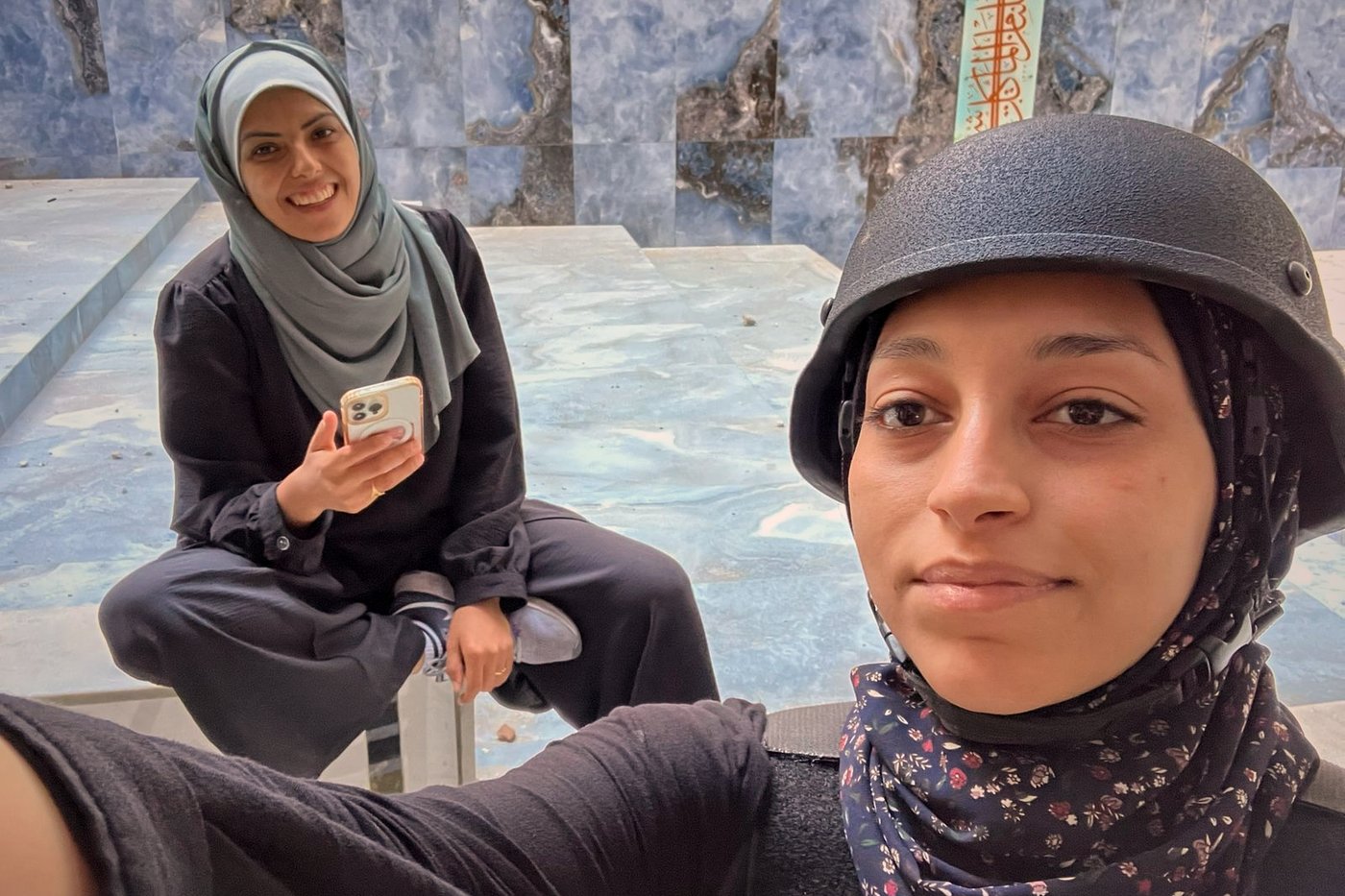
Join the Conversation!
Want to share your thoughts, add context, or connect with others in your community?
You must be logged in to post a comment.













